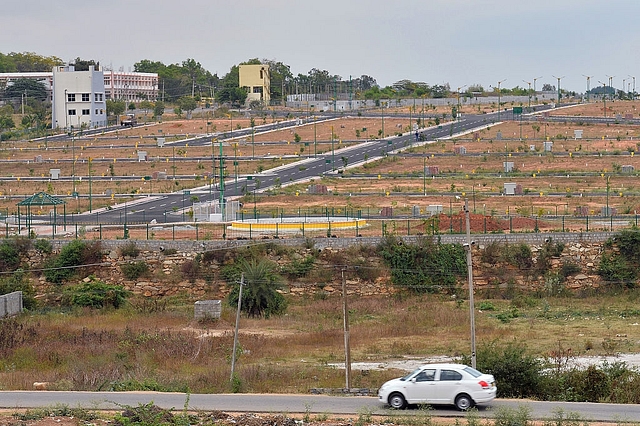
Thanks To DeMo, Even The Resilient Bengaluru Real Estate Has Imploded
Even Bengaluru’s resilient real estate industry couldn’t escape the brunt of demonetisation.
Though the residential market hasn’t been doing well in the last two years, demonetisation is going to make things worse.
The withdrawal of old high-value currency notes has impacted several sectors adversely. Real estate is one of them. According to a report by Knight Frank, the realty sector suffered a sharp drop in sales in eight major cities in the fourth quarter of 2016, resulting in a notional revenue loss of around Rs 22,600 crore. In addition, the report estimates revenue loss to various state governments on stamp duty collection to be around Rs 1,200 crore.
Even Bengaluru’s resilient real estate industry couldn’t escape the brunt of demonetisation (DeMo). Though the sales and launches in the residential market have declined considerably in the last two years, DeMo is going to make things worse.
The market hit an all-time high in 2013. Since then, the number of new launches has fallen to less than half. For the last two years, the number of sales has surpassed the number of launches, which mostly didn’t happen earlier, as can be seen in the graph below.
Given the record in the past two years, the poor health of the city’s real estate sector can hardly be attributed to DeMo alone. The report notes that launches were already on a decline. The rising unsold inventory in the city, Bruhat Bengaluru Mahanagara Palike’s drive to confront the encroachment of lake beds and other issues like the momentary civil turbulence surrounding the long-standing Cauvery river water dispute were the major reasons for market constriction.
Additionally, sales have only declined marginally. It’s the new launches that have taken a massive hit. (While the launches declined by 17 per cent, sales witnessed only a 7 per cent dip). The situation is expected to improve. There is an unsold inventory of 1,21,000 in the city at present. Buyers are holding out right now as they await further reduction in the home-loan rate and some income tax sops in the upcoming budget.
The southern part of Bengaluru is witnessing considerable expansion. This area, for instance, accounted for nearly half (47 per cent) of the total launches in the city in the second half of 2016. Information Technology (IT) parks along the Outer Ring Road (ORR) have caused vertical expansion in residential spaces in areas such as Bellandur and Sarjapur Road. Electronic City has also sprawled into a big IT hub with scores of new residential complexes dotting the area. This has choked the roads and made the traffic situation worse. So people are increasingly looking to settle in areas that are getting metro connectivity. Phase 2 (and 2A) of the city’s metro project, which is scheduled to be completed by 2020, will probably ease the traffic around Silk Board and along the ORR.
More focus on easing transportation woes will certainly act as a stimulus for the battered sector. However, the reality is that it cannot ever achieve its true potential without a serious price correction of 30-40 per cent. But DeMo alone isn’t going to deliver the desired results.
This is true for the sector in perhaps all the major cities in the country. The Real Estate Regulation and Development Act 2016 will constrain realtors from fleecing and cheating home buyers, but the real reforms have to come from states and municipal corporations, which decide floor space indices and building laws and permissions.
Prime Minister Narendra Modi needs to use the new Benami Transactions (Amendment) Act, notified in November, as a stick to force states to act in these spheres. It is a tough task, but real growth in jobs will depend on a streamlined and efficient realty sector, where land supply is increased to meet the demand for affordable housing.